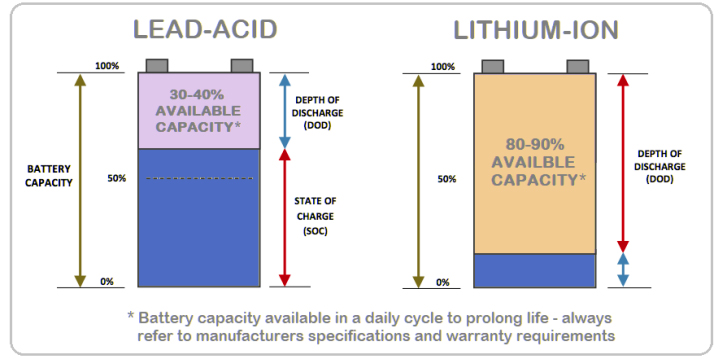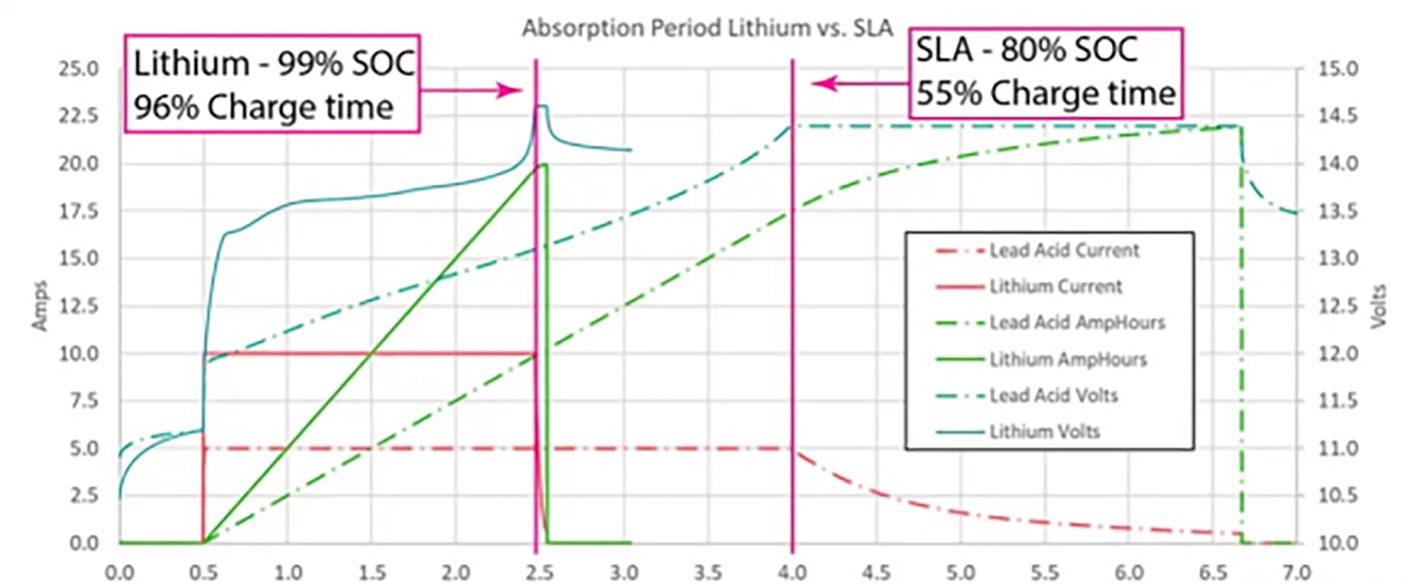When selecting a solar battery storage for home energy storage systems, the comparison between lead acid and lithium ion batteries is unavoidable. Both types of batteries have their pros and cons. However, the question remains: which one is better? This article explains their differences to help you make an informed decision.
Lead Acid VS Lithium Battery

Below is a side-by-side comparison of the key differences between the lead-acid and lithium battery for solar, focusing on critical factors.
| Feature | Lead Acid Battery | Lithium Battery |
| Cost | Lower upfront cost | Higher initial cost |
| Lifespan | 3–5 years (300–500 cycles) | 8–15+ years (2,000–5,000 cycles) |
| Weight | Heavy (bulky design) | Lightweight (50–70% lighter) |
| Efficiency | 70–80% depth of discharge (DoD) | 90–100% DoD |
| Maintenance | Regular maintenance required | Maintenance-free |
| Charging Speed | Slow (6–8 hours) | Fast (1–3 hours) |
| Environmental Impact | Contains toxic lead; recycling challenges | Eco-friendly; easier to recycle |
Why Is Lithium Better Than Lead Acid
While lead acid batteries have long been a traditional choice, modern energy demands and sustainability priorities highlight the superiority of lithium. Given these differences, it's clear that lithium solar battery storage has significant advantages over lead acid in four key areas:
⭐ Long-Term Savings: Despite higher upfront costs, lithium storage battery last 3–5x longer, reducing replacement expenses.
⭐ Superior Performance: Faster charging, deeper discharge cycles, and consistent power output make lithium ideal for high-demand applications.
⭐ Portability: Their lightweight design suits RVs, boats, and solar setups.
⭐ Eco-Friendly: Lithium battery for solar storage has a smaller carbon footprint and avoid toxic lead.

Conclusion
While lead acid batteries may seem budget-friendly initially, lithium ion storage batteries deliver unmatched value, efficiency, and sustainability. For long-term savings and superior performance, lithium is the clear winner.
